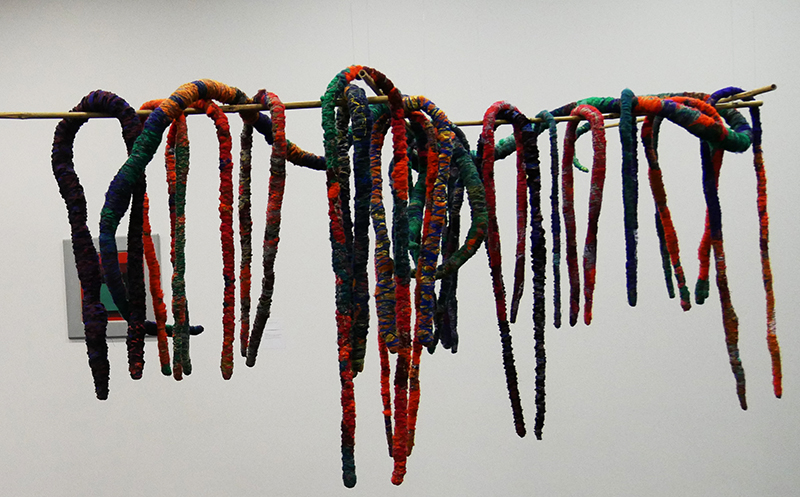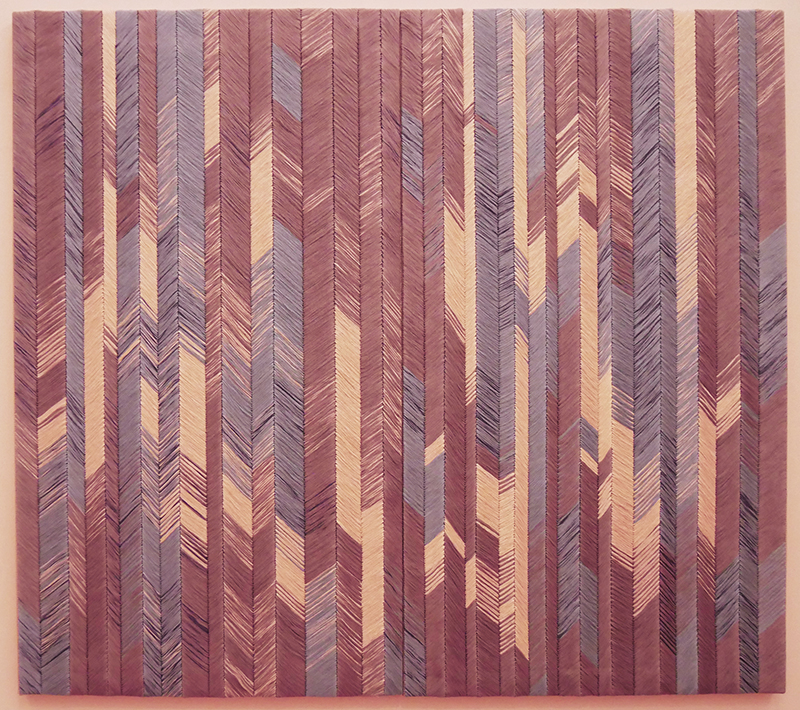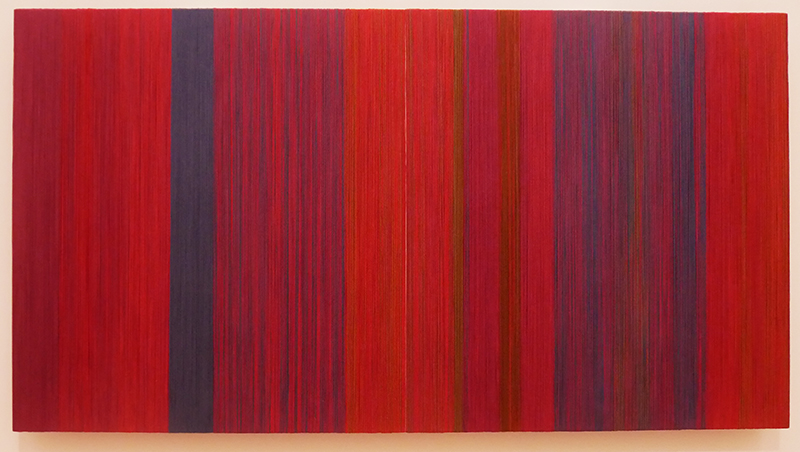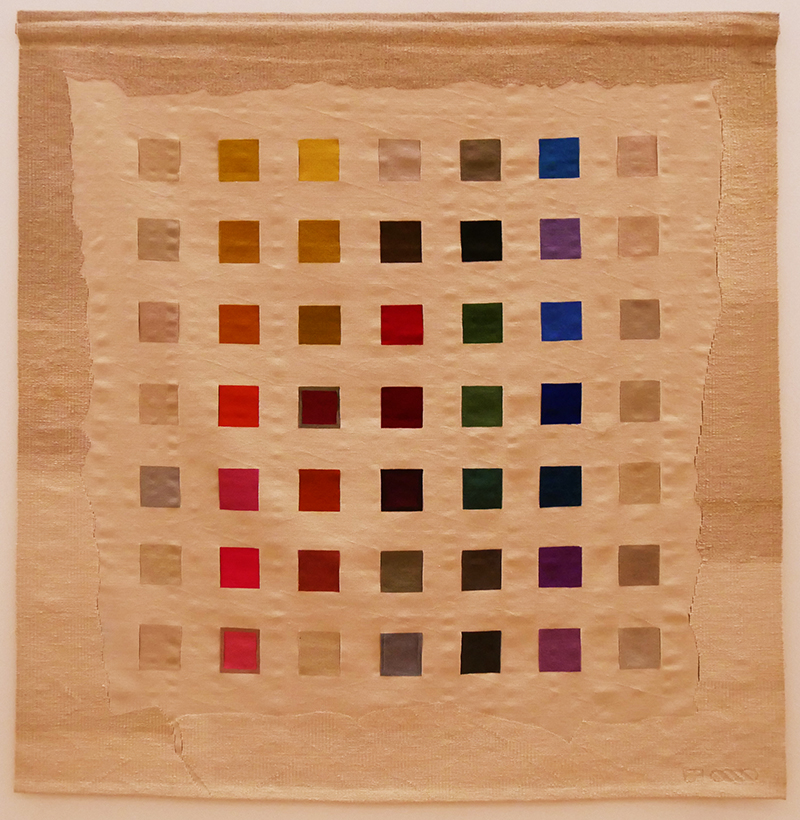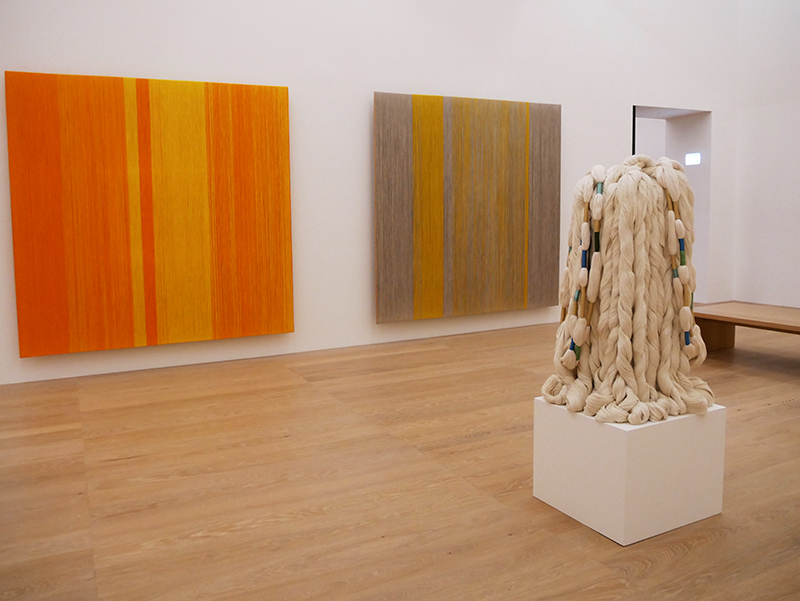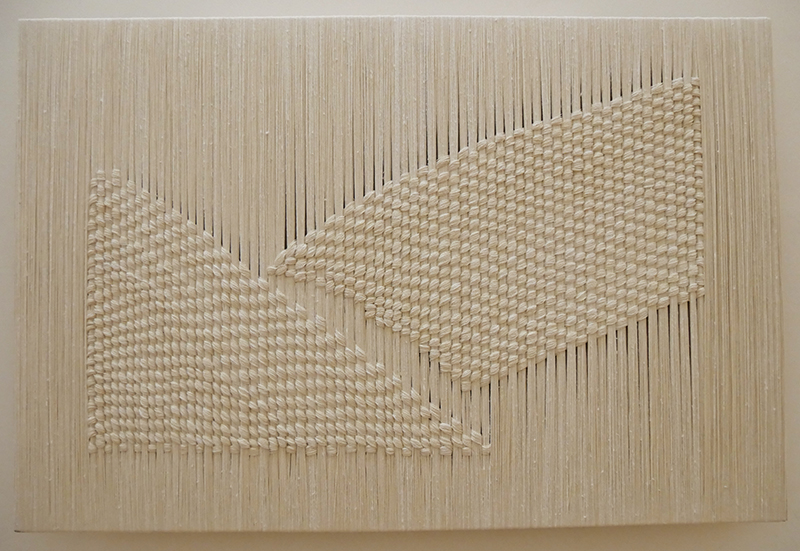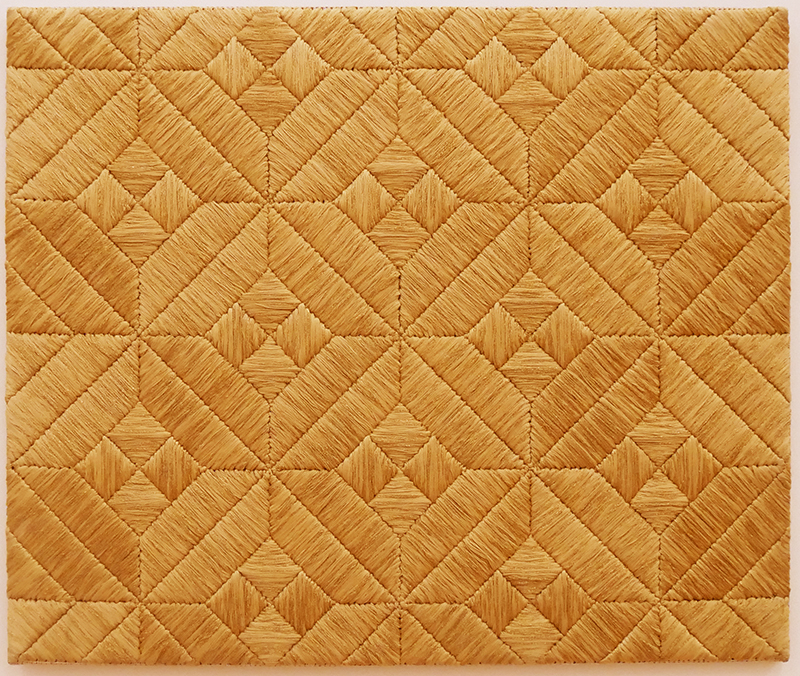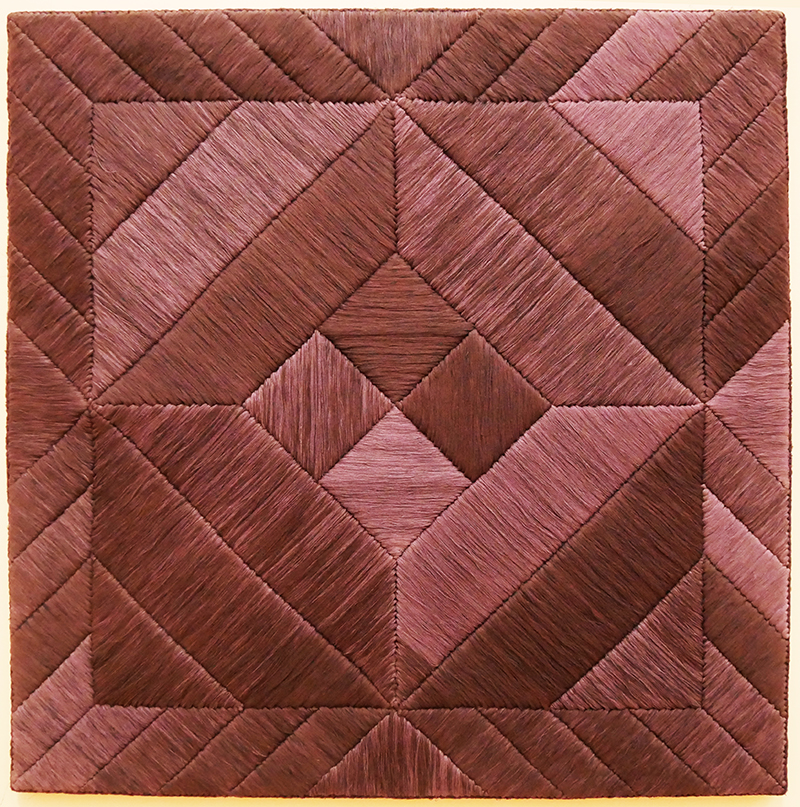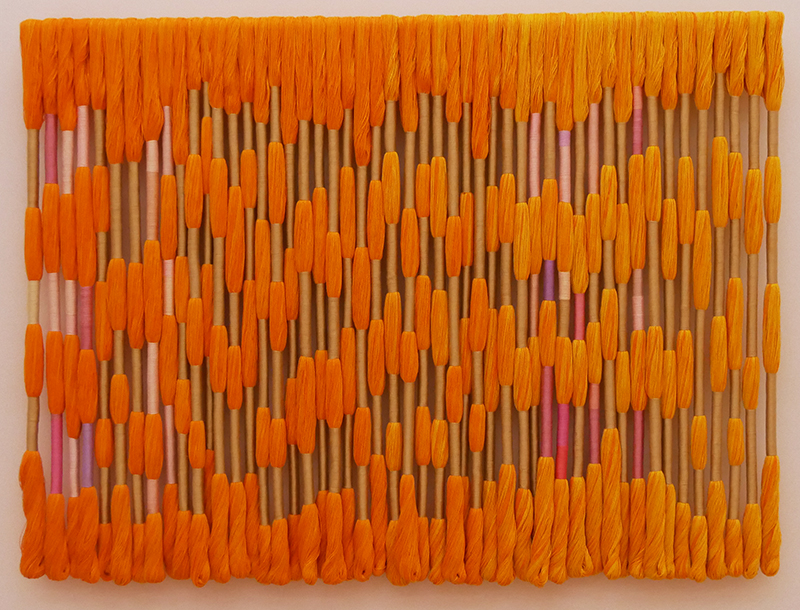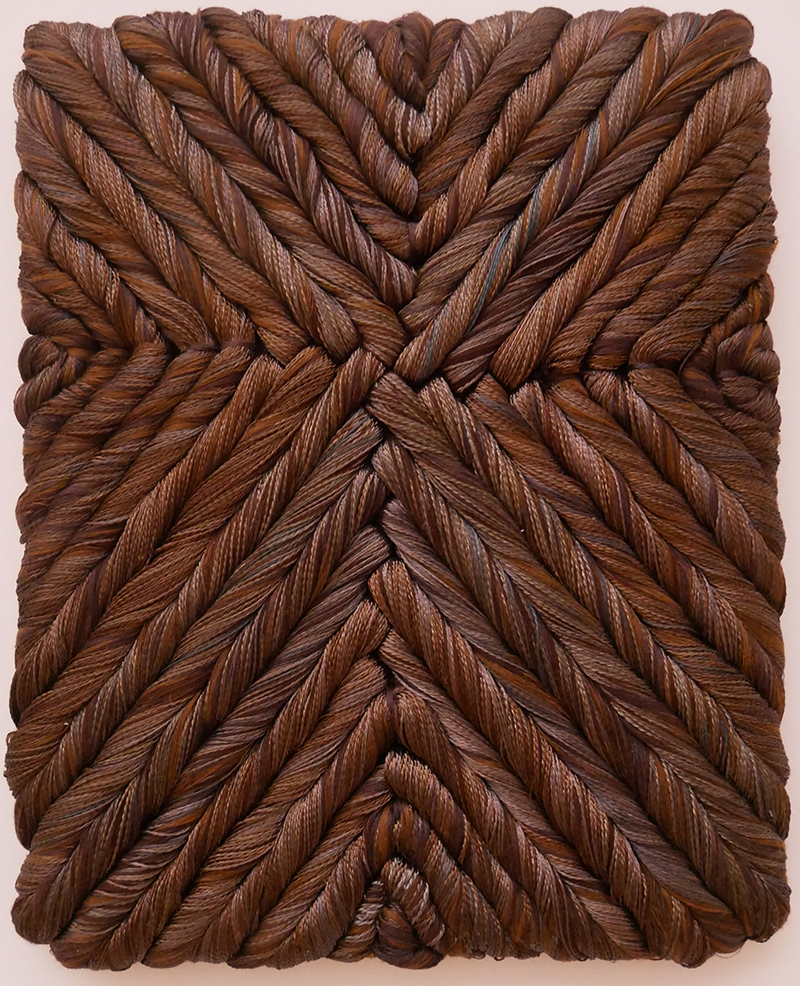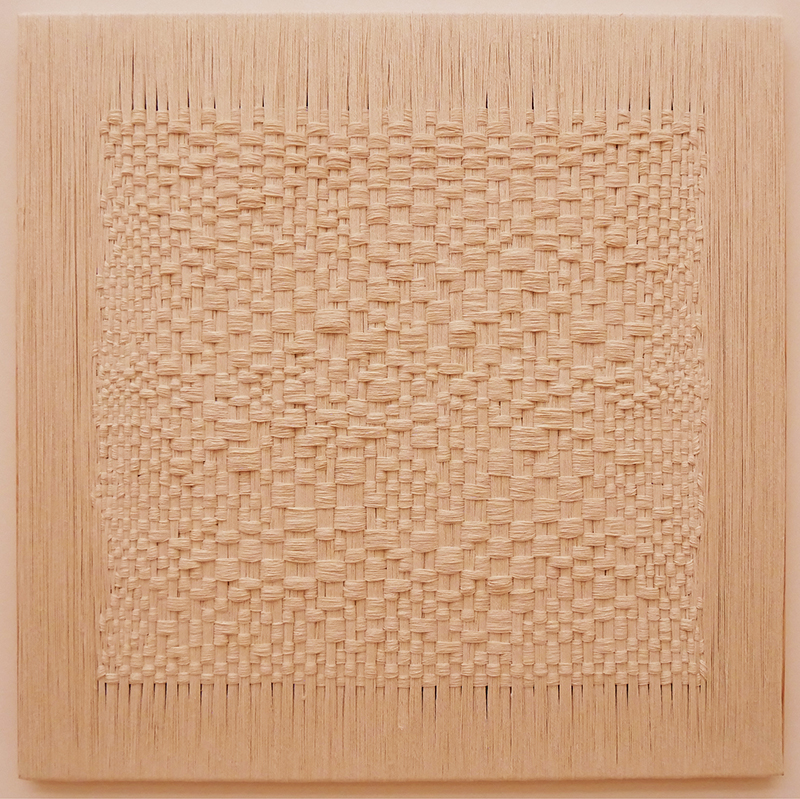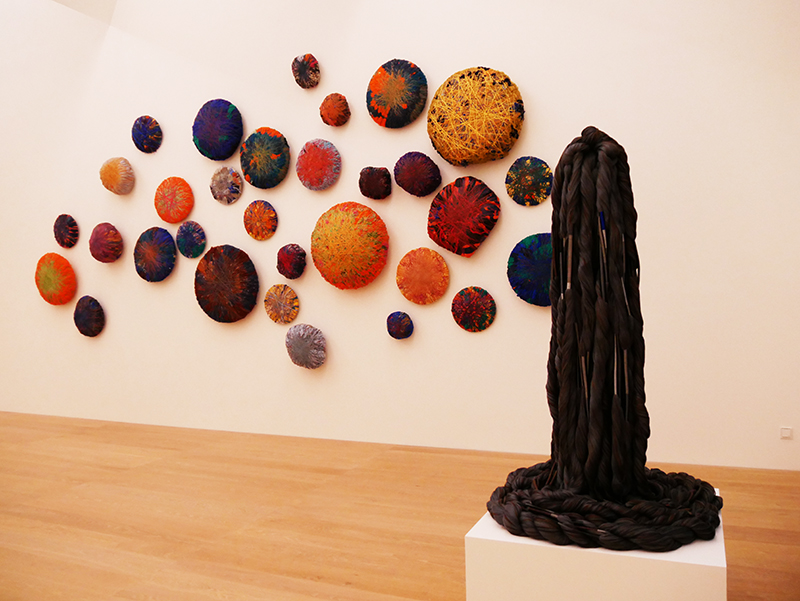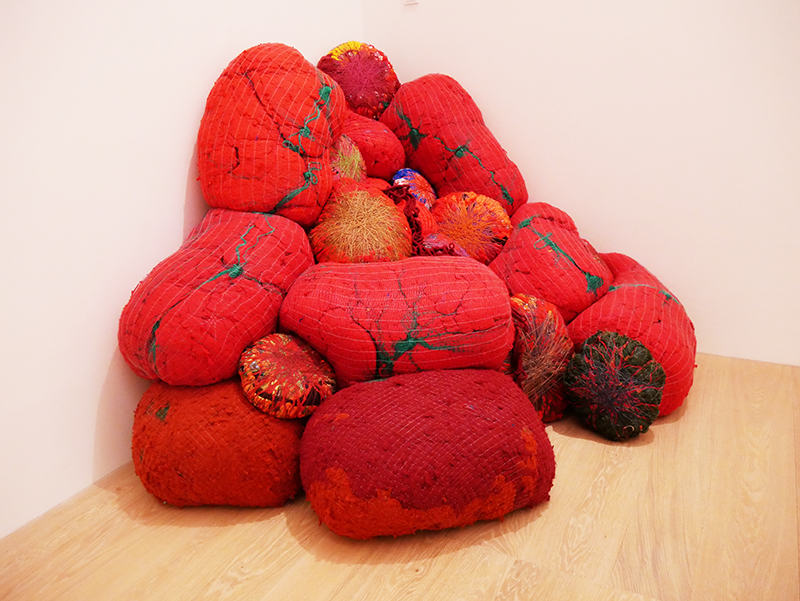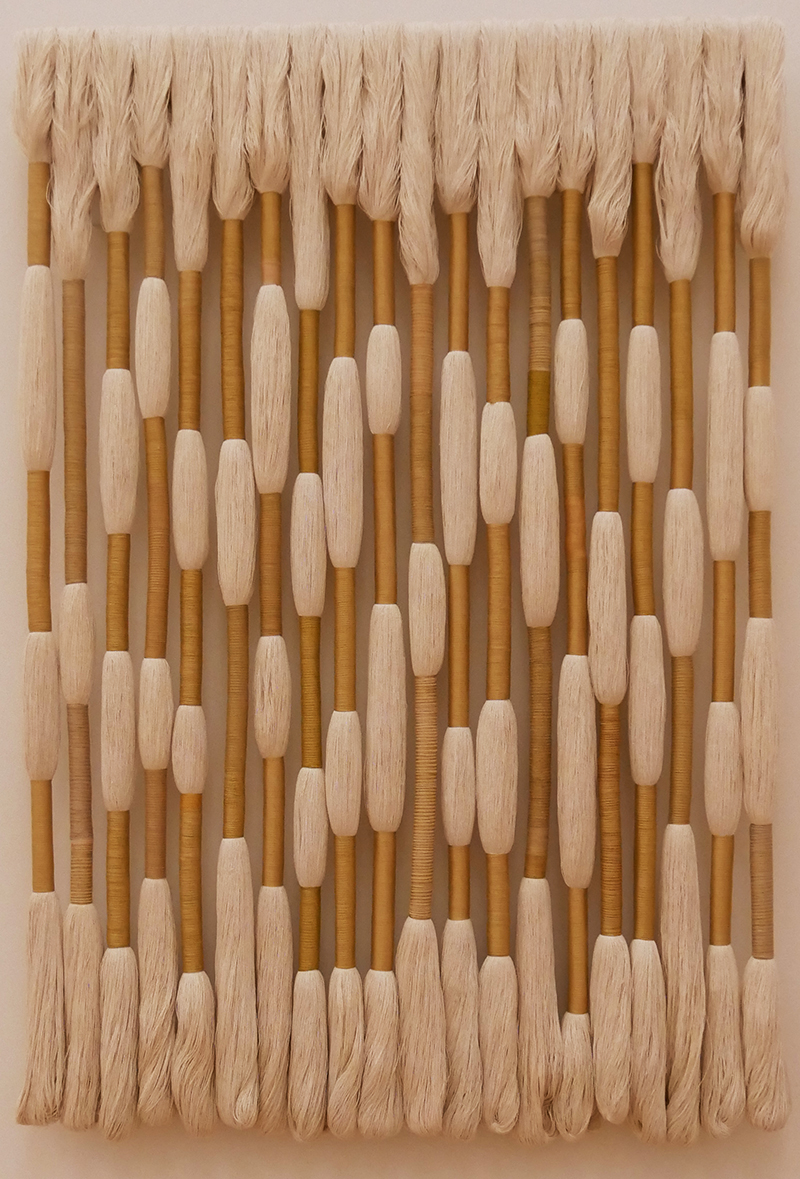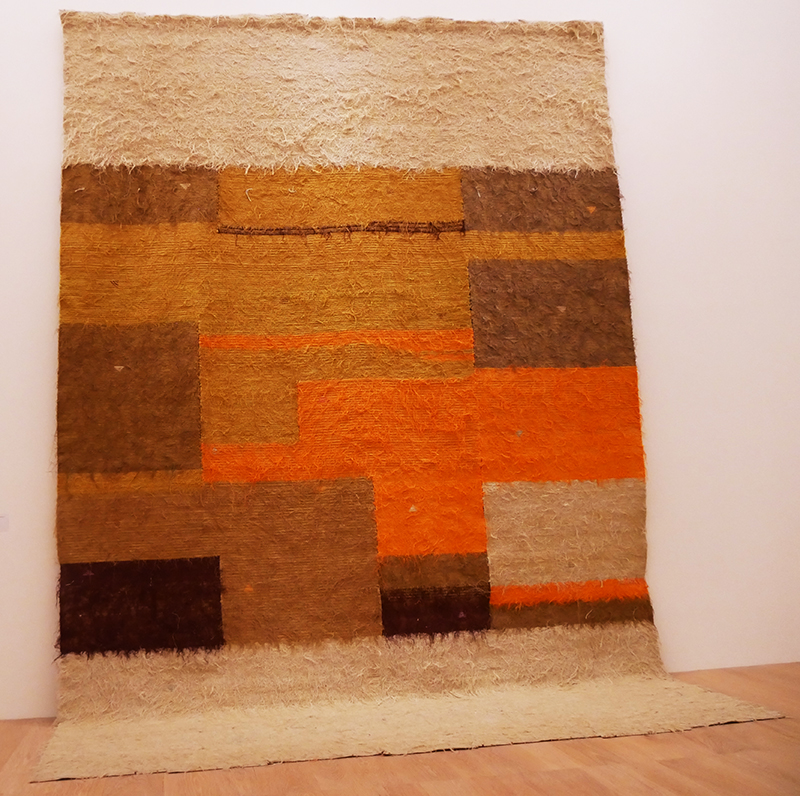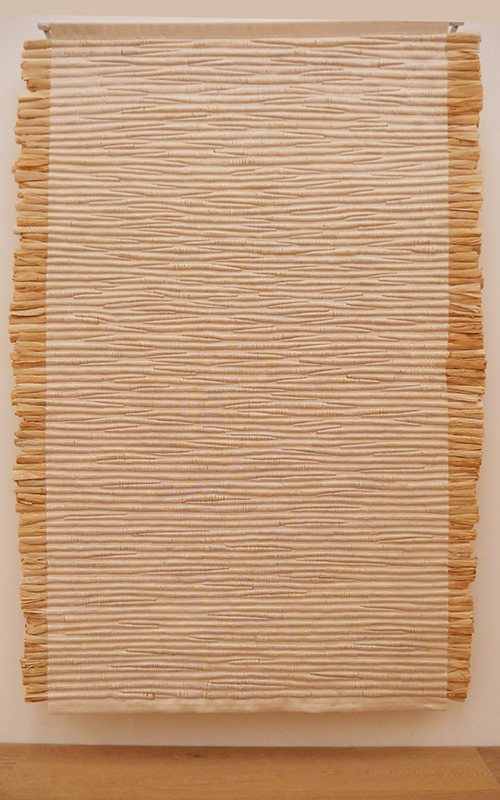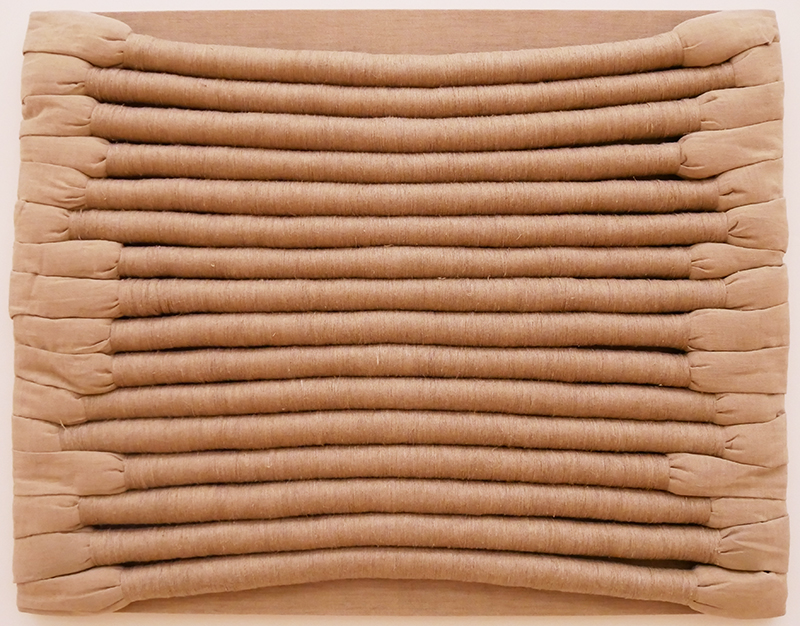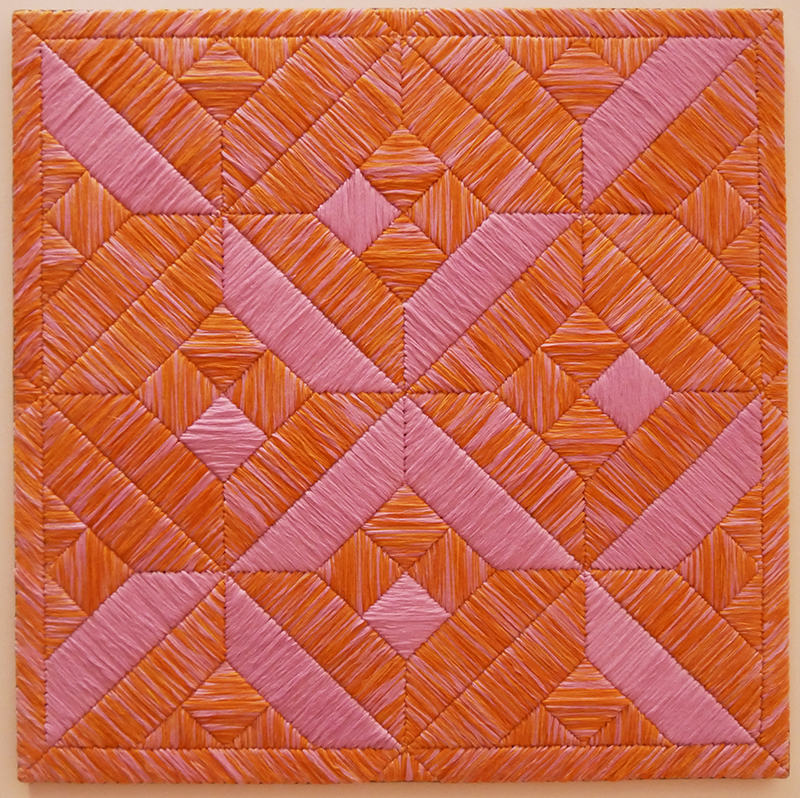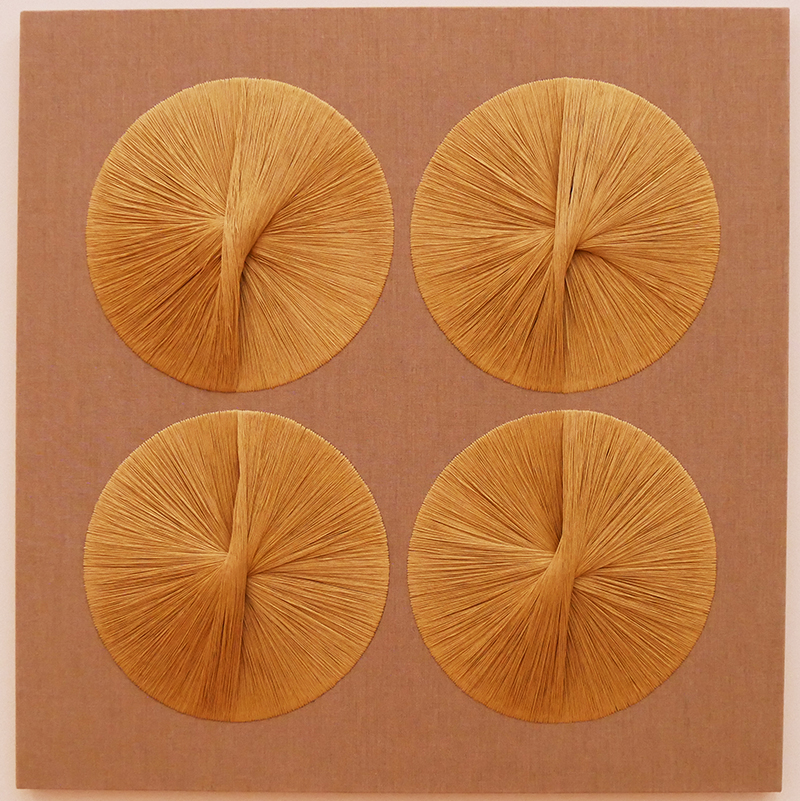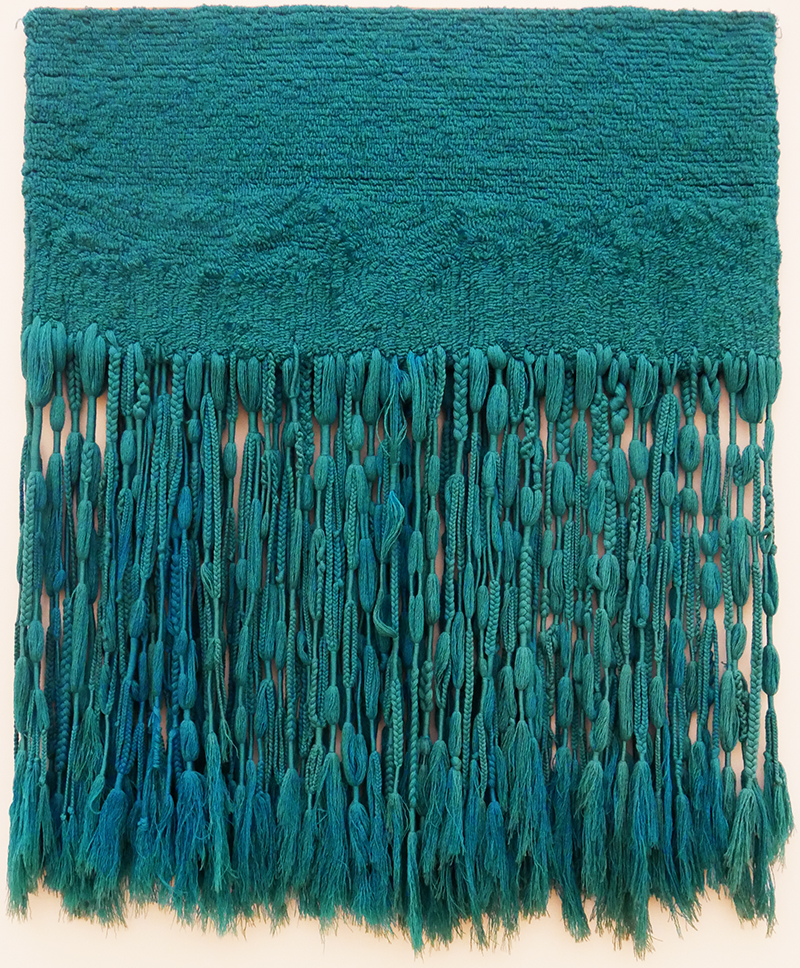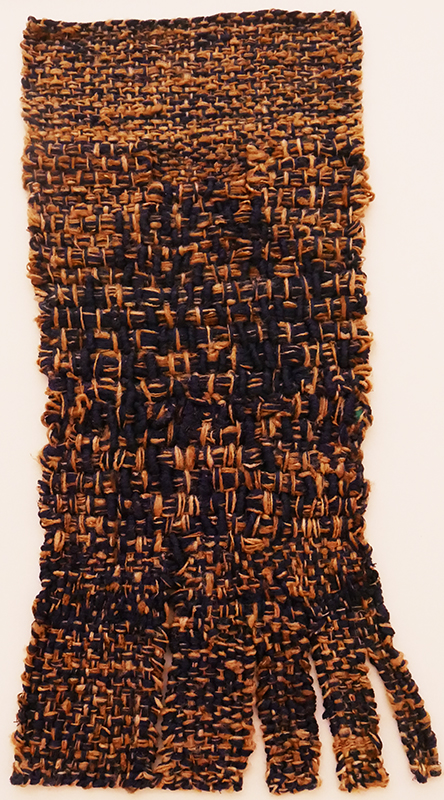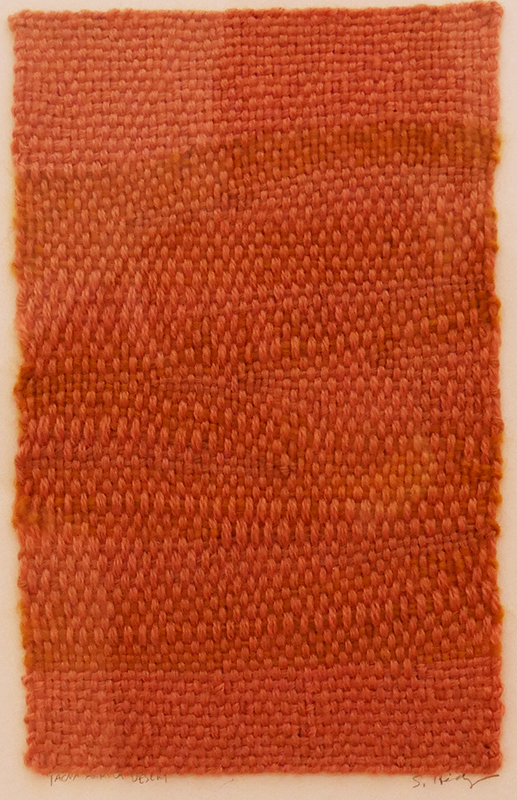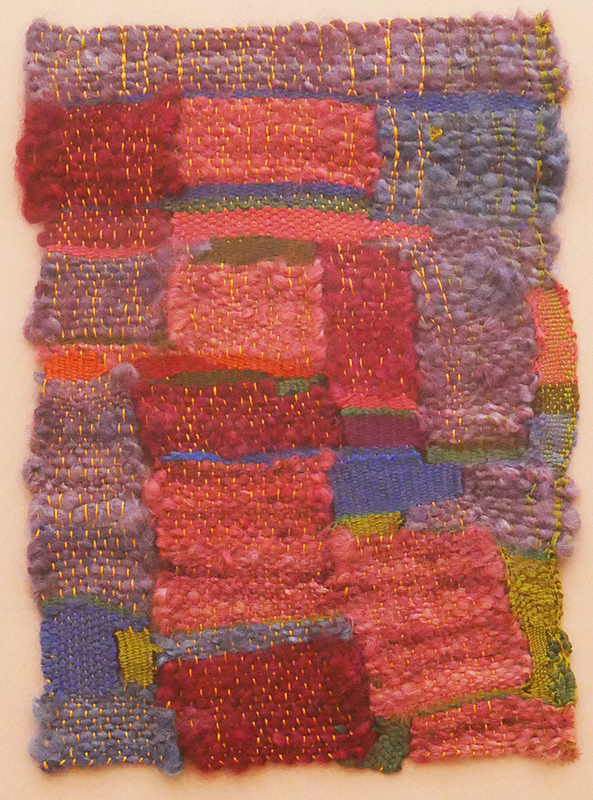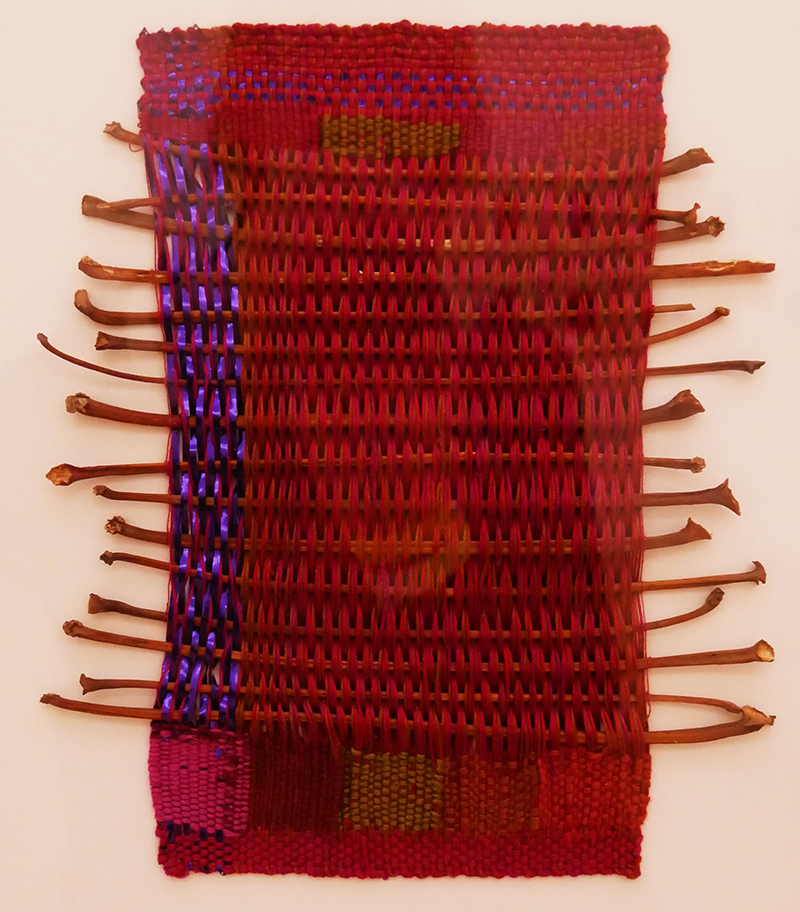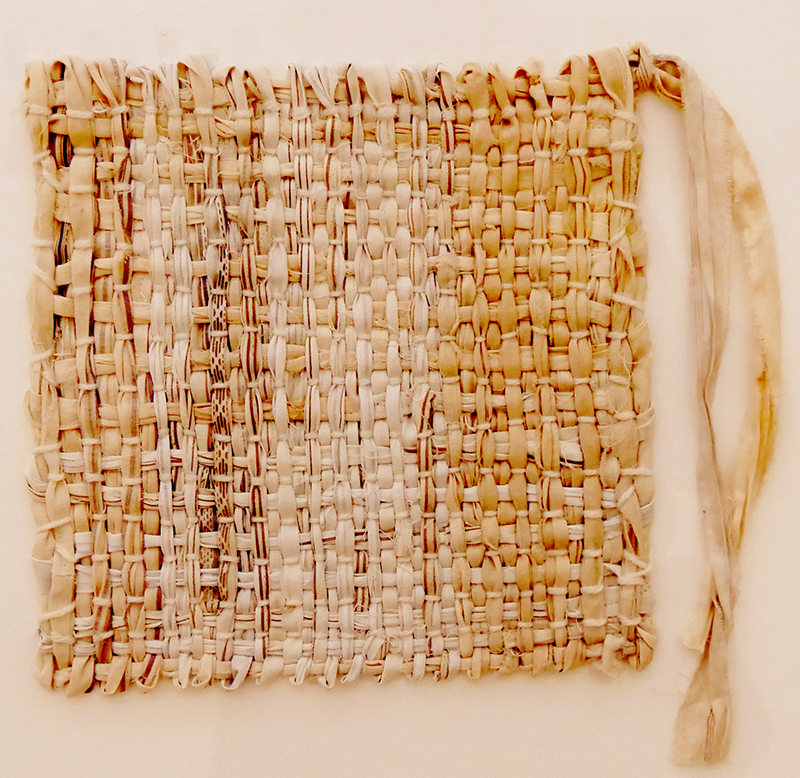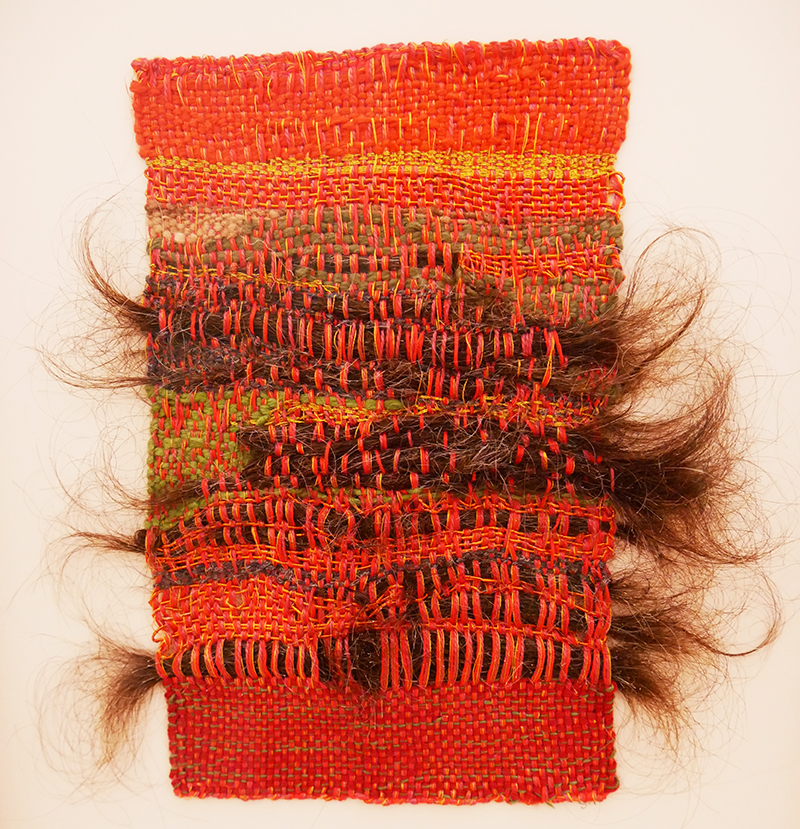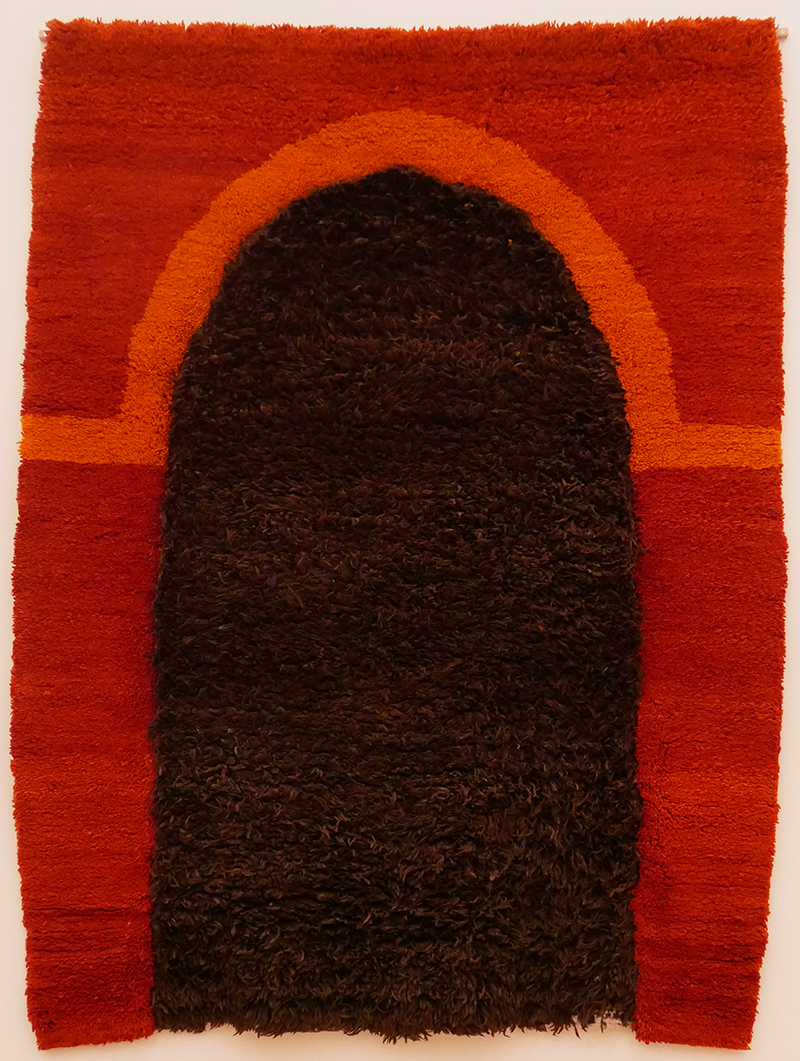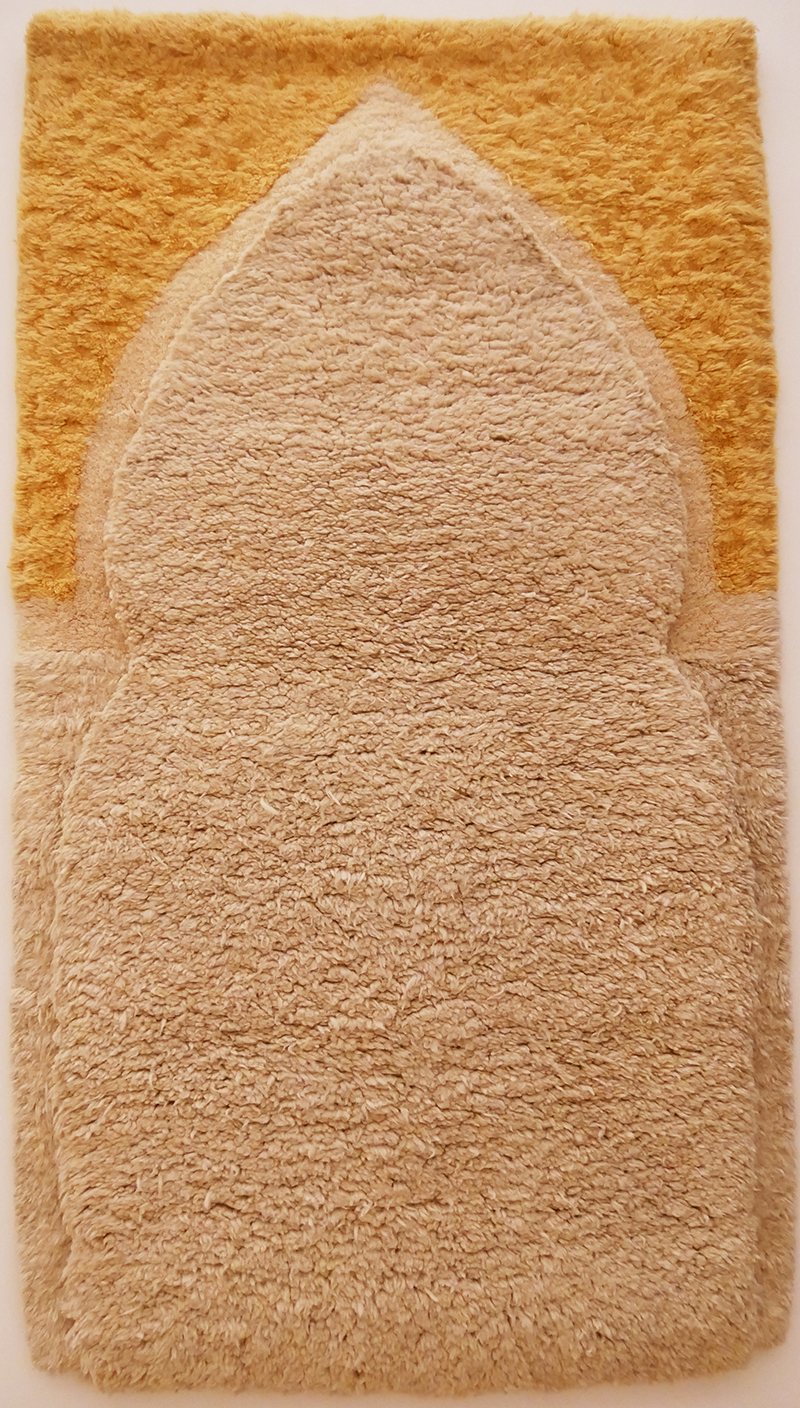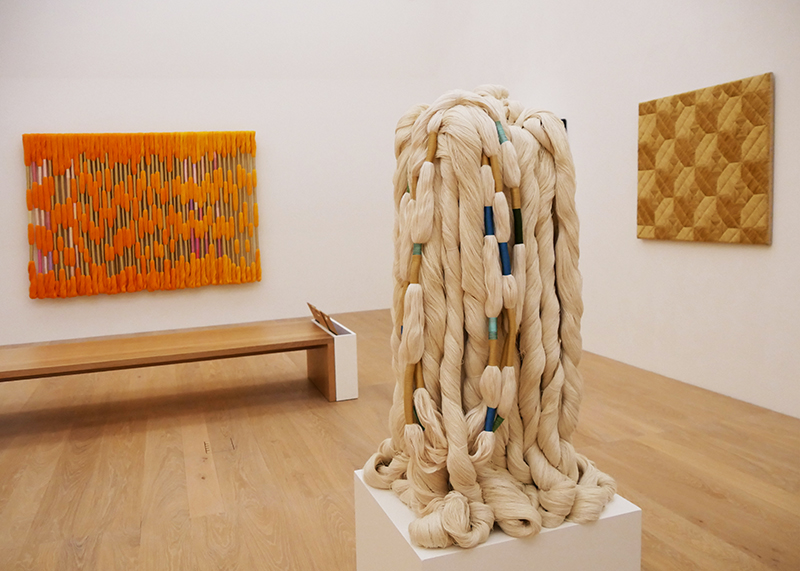 Sheila Hicks 2
Sheila Hicks 2
The second part of the retrospective exhibition of Sheila Hicks in the Josef Albers Museum in Bottrop was a surprise: Here the beginning of Sheila Hicks work was shown with some of her paintings made in the 1950s when studying color courses with Josef Albers at the Yale School of Art. Here it became visible how important Josef Albers has been for Sheila Hicks, who wanted her colors to dance! The museum staff has managed to let the magic happen, used as they are to the subtile color paintings of Josef Albers, they treated the textile works of Sheila Hicks with the same care with the result that her colors really started to dance. In the text to the Bottrop exhibition it was said that especially the early works would be shown, which was the case but still some newer works were on show here too, so that there was a real overview of her more than 50 years in textile art. Where the interaction of colors by Josef Albers are restricted to paintings in square format, Sheila Hicks vivid textile colors often are large-format in space, as weavings, rugs, reliefs, sculptures or installations. They are in movement as textile materials always are with a magical interaction.
The themes that connect the art work of Josef Albers and Sheila Hicks are: Serial work – references to architecture – material of art – photographic excursions – learning and teaching – homage to color – travel
“What can you do with threads?“ is the life-long question the artist asked herself . She has developed numerous techniques, on the basis of old techniques but with new and unexpected further developments. In her work „Quipo“ from 1966 she refers to the „Quipus” from the Andes regions, over 5000 years old are they communicating facts via knots, choice of material, twists and color. These quipus are nearly not deciphered. Hicks took over the different elements like repetitive knots and twists, focussing on color and space.
For her „Lianes“(Lianen) Hicks uses a technique that she came to know in 1957 in Chile as an ikat technique of the indigenous Mapuche, who wrapped around bundles of yarn to let them stay undyed. These wrappings were later removed but Hicks keeps the wrapped appearance, she takes linen threads to strands, wrapping parts of them with cotton, silk or steel threads thus focusing on both the flexibility and stability of textile materials.
Further themes of Sheila Hicks are her „Boules“ (Balls), that I saw for the first time in Venice in 2017, textiles wrapped with thread around used textiles or objects. They are made in different sizes and varying colors, giving them an extraordinary luminosity. These wrapped form has its origin in pre-Incan tombs where the mummies and their possessions were enveloped in textiles.
Her „Columns“ are monumental sculptures reminiscent of Greek and Egyptian columns, made in a broad color palette, sometimes monochrome, but often bright and colorful. These columns resemble soft architectural structures, sometimes free-standing, or suspended from the ceiling.
With her „Minimes“(Miniatures) Sheila Hicks started already exploring weaving at her study time at the Yale School of Art, small intimate playful works in wool, silk, linen and many other unconventional materials like shells, stones, human hair, feathers etc. She has created over a thousand miniatures to date, made on improvised looms like used by indigenous Andean weavers. Hicks often uses these small weavings with four selvedges like sketches for her larger works but they also are art works in itself.
Then there is a group of works called „Talking Sticks“(or Speaker’s Staff), these refer to sticks indicating who has the right to speak in Communities in Africa, Oceania and North-West America. Sheila Hicks Talking Sticks are bamboo canes wrapped in multi-color fibers, arranged in varying formations.
A further group of works are the „Bas-Reliefs“ either woven or stitched but also a series of large canvases wrapped in linen. Here again it is the use of color that makes Hicks work stand out.
In Bottrop also some of her earlier architectural commissions were exhibited in Bottrop, among them samples of the metal thread on linen embroideries for the Ford Foundation.
All in all, it is nearly too much to see the over 250 works in both exhibitions in one day, as I did. But I did it in the right order, the larger monumental works in Düsseldorf are already impressive, but coming to the beautiful Josef Albers museum in Bottrop with the (in my eyes) more careful exhibition layout, paying so much attention to the colors and their interacting, was breathtaking.
Now I am waiting for the catalogue to be published, the first on Sheila Hicks in German language, that I hope to review soon here for my blog!
Beatrijs Sterk
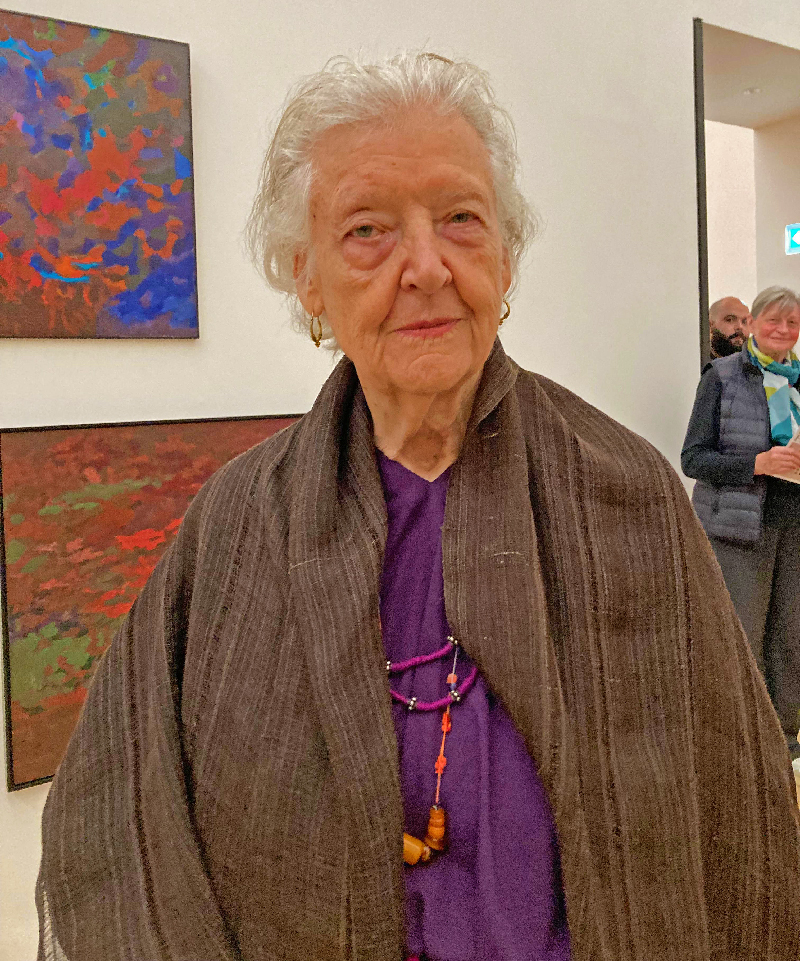 Sheila Hicks at the opening of the Bottrop exhibition on her work, this 90 years old artist was also present at the press conference. Photo Karin Thönnissen
Sheila Hicks at the opening of the Bottrop exhibition on her work, this 90 years old artist was also present at the press conference. Photo Karin Thönnissen
